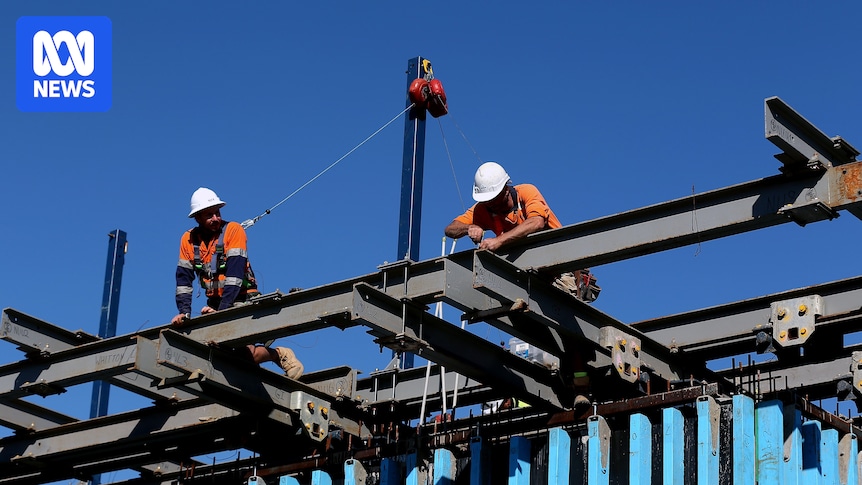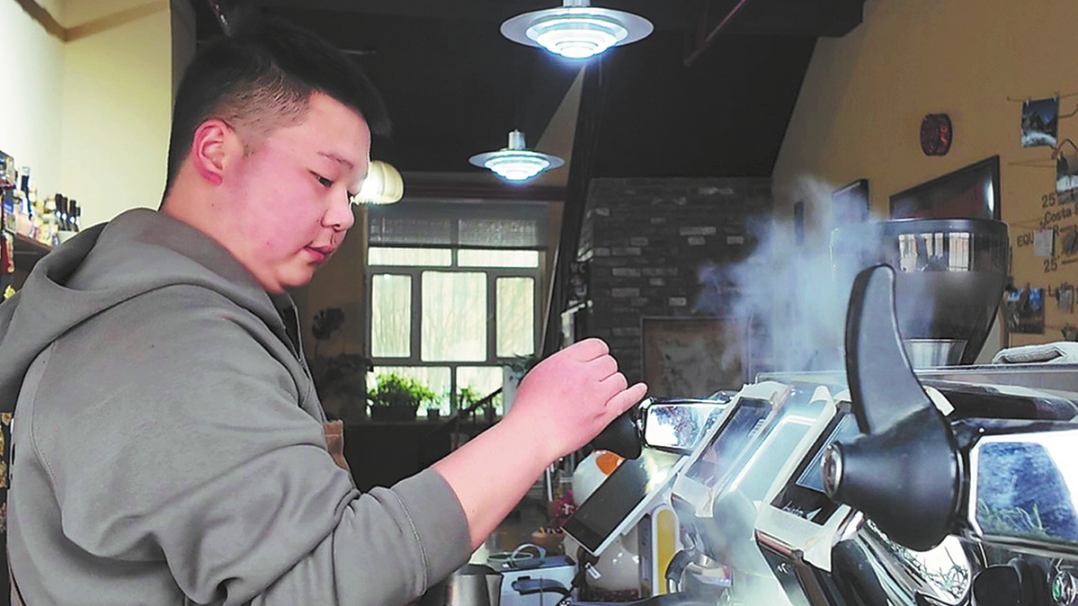It takes twice as long to save up for a house as it did a generation ago.
There are endless ways to frame Australia’s housing crisis, but that simple fact does most of the job. In the 1990s, it took six years to afford a deposit for a mid-price house on an average income. Today, 12 years.
Little wonder that housing is dominating our politics. It has up-ended the social contract for Australians in their 20s, 30s and 40s, no longer assured that a middle-class job can earn them a life in middle suburbia.
The problem can be daunting and it’s easy to doubt that it can be solved. But a fix may not be so far away. In Auckland, a wave of planning reform a decade ago has transformed a city once as unaffordable as Sydney, doubling the pace of building with a boom in townhouses and clamping spiralling rents and house prices.
Change came slowly, then suddenly. “The push really started around 2011 but it took several years to get going,” New Zealand economist Stuart Donovan says. “The housing affordability was very bad, and eventually that created a social licence for change.”
A townhouse boom in Auckland had a dramatic effect on affordability. (ABC News: Luke Bowden)
The Grattan Institute’s Brendan Coates thinks a similar shift could be underway in Australia. Political leaders are talking more about housing supply and taking early steps towards action.
“I think that we are poised if we can get that right to really turn around housing,” he says.
“But the risk is that it becomes the new climate change, where politicians decide it’s more important to focus on their differences rather than finding common ground.“
As a federal election approaches, those differences are taking centre stage, as are voices who doubt that the solution to the crisis is as simple as building more houses. So what will it take to clean up our housing mess?
The issue of housing is set to dominate the upcoming federal election. (AAP: Dean Lewin)
A crisis with deep roots
The problem began as a success story. Australian standards of living grew enormously in the 1980s and 1990s, and demand for housing grew along with it. By the start of the twenty-first century, a combination of migration, low interest rates, and generous tax settings for housing investors had supercharged demand even further.
House prices began to grow faster than incomes. From 2001 to today, prices quadrupled while wages doubled.
That did two things. First, it gave home owners an unprecedented explosion of wealth. Australians who turn 60 this year were in the sweet spot. On average, they were twice as wealthy on their 50th birthday as on their 40th and are wealthier again today.
Rising incomes brought with them greater demand for housing, and for larger homes. (Iraphne R. Childs, QUT Collection)
It was a pace that hadn’t been seen before and hasn’t been seen since, because as houses have become more valuable to those who own them they have become less affordable to those who want to buy them.
At first, this manifested in larger deposits, and longer-lasting mortgages. Home ownership rates fell in all age cohorts, but most of all for the young.
But a saving grace was that interest rates stayed low, making mortgage repayments manageable. And rents did not explode, moving broadly in line with incomes.
Now, neither of those things is true, and young Australians confront a full fiasco: large deposits, long mortgages, high repayments relative to income, and accelerating rents, all of it often in smaller houses located further from work. Home ownership rates have fallen sharply and the portion of income spent on housing has increased.
And meanwhile, demand for housing has surged again since the pandemic thanks to record temporary migration and our new-found desire to have extra space for home offices, both worsening the problem.
The trouble with supply
This was not inevitable. Soaring demand would not have meant soaring prices if the supply of housing had kept up.
But it didn’t. Building activity started to slump in the early 2000s, coinciding with the acceleration in prices. The pace picked up a little in the 2010s and saw improvement in some places, especially in Melbourne. But it has slumped again to historic lows.
There have been many reasons for this, including labour shortages and a spike in the cost of building materials – both now subsiding.
But a large body of evidence suggests the clearest reason is that there is not enough land available to build more homes, especially medium-density housing in the inner-city suburbs where people most want to live.
Many economists finger the planning system as the main culprit. Getting a new building approved by local councils is notoriously complicated, requiring developers to navigate a labyrinth of rules and lengthy delays.
Most housing economists blame the lack of land available for ‘up-zoning’ for the housing affordability crisis. (Brendon Thorne/Bloomberg via Getty Images)
“Our planning approval systems are too complex and too slow. Arrangements vary across states and territories and across the more than 500 local governments that provide planning consent authority,” Susan Lloyd Hurwitz, chair of the government’s housing supply and affordability council, told the National Press Club last year.
“The frameworks and processes that dictate what gets built, and where, are hugely biased against change.“
There are restrictions on where development applications can be made, with heritage protections and low-rise “zoning” locking away entire blocks.
And even when applications are made on the limited and scattered sites where they are allowed, objections from councillors and locals mean developments are often only approved with conditions, such as size reductions. Many developers say the delay means an application is simply not worth it, even when land is available to develop.
That fact – that developers often sit on available land – is seen by some as evidence that the greed of private developers is the real problem, not local councils, which has led to support for a government-owned property developer to compete with the private sector.
Greens unveil new housing policy
The Greens want the federal government to enter the property development game as part of a new housing policy to be unveiled on Wednesday afternoon.
Peter Tulip of the Centre for Independent Studies says the fact that there are more than 1,000 property developers in Australia, enough for healthy competition, suggests this phenomenon would dissolve if there was more land.
In fact, Tulip sees the large profits developers make today as proof that not enough land is available. If building homes is very profitable and developers are profit-hungry, the argument goes, they should compete with one another for the profit and so reduce it.
He argues the persistence of profits suggests this isn’t happening, with the blockage being that there is not enough land available for up-zoning.
Peter Tulip has measured the price impact of insufficient supply on apartments in Sydney, Melbourne and Brisbane. (ABC News: John Gunn)
“Builders don’t build because they’re not allowed to,” he says. “The only reason there is land banking is because of zoning.
“The ability to speculate on property value relies on scarcity, and it’s the zoning that brings the scarcity. Let competition happen, let other developers access more land, and the speculation would become loss-making.”
His own estimate, from 2016, is that land shortages are adding 30 to 40 per cent to the price of detached houses in Sydney, Melbourne, Brisbane and Perth.
Similar estimates in 2022 for apartments from the NSW Productivity Commission show a 37 per cent ‘zoning premium’ in Sydney, 19 per cent in Melbourne, and 3 per cent in Brisbane.
Tulip argues obstructive local councils are the cause, noting the biggest profit wedges in Sydney are in the most desirable council areas – Randwick, Woollahra, Hunters Hill, Mosman, Waverley, Willoughby, and the Northern Beaches – where housing growth has also been the slowest.
State governments in NSW and Victoria are now taking a more active role in planning, overriding local councils to identify areas for “up-zoning”. The objections of locals are still strenuous, but there are signs of progress.
“It would have been inconceivable a decade ago to have a Victorian government say, ‘we’re going to up-zone Brighton’,” Coates says.
The Allan government in Victoria has announced several up-zoning areas around train stations. (AAP: Joel Carrett)
And the gap, while large, would not require an unprecedented effort to fix. In Sydney, for example, the NSW Productivity Commission estimated in 2020 that NSW had an accumulated shortfall of 54,000.
Peter Tulip has a larger estimate of 82,000 for apartments in Sydney, but says even this could be closed over a decade with only about 1,000 extra homes per year compared to the recent average.
“If those state governments follow through, then we’ll see affordability improve potentially very quickly, in the space of a few years,” Coates says. That’s the Auckland experience.
Canberra’s deep pockets
With planning powers in the hands of either councils or states, the federal government is mostly reduced to watching from afar.
The Albanese government has sought instead to play a co-ordinating role, setting a national construction target of 1.2 million homes in five years. Few housing experts think that will be met even as they applaud the ambition.
But the government has put money behind its push, offering billions to state and territory governments if they exceed their individual targets, and putting $10 billion into a fund to provide ongoing grants to build social and rent-capped housing, an initiative poised to end the years-long stagnation in the government’s own contribution to housing supply.
The federal government has paid state governments to build more housing, but Brendan Coates said targets would need to be renegotiated. (AAP: Bianca Di Marchi)
It has taken most of the government’s first term to get these arrangements in place, and it is too early to record much actual progress. To date, Labor’s social housing fund has led to only 12 signed contracts, and even fewer shovels in the ground.
But Brendan Coates is among those optimistic the push will eventually bear fruit, despite early “missteps”.
“The next government, whoever it is, needs to stay the course, he says.
“It’s hard to imagine more difficult circumstances to build housing than the current economic conditions.
“So, targets will need to be renegotiated with states and territories to make sure the financial incentives the federal government is offering are meaningful and achievable.”
The Coalition, though it objects to Labor’s social housing fund and thinks the 1.2 million target is “dead in the water”, agrees that more affordable housing requires more housing.
The Coalition and Labor square-up over housing policies
The differences between Labor and the Coalition’s plans to ease the housing crisis are becoming clearer, with the opposition betting that Australians prefer detached dwellings in outer suburbs rather than high-density housing.
Its focus has been on building new housing in greenfield urban fringe zones, funding “enabling infrastructure” like sewers and connecting roads to “unlock” new housing.
The scheme is similar to a smaller one Labor already has in operation, but the focus reflects a political calculus to pitch growth to outer suburban voters while sidestepping the density fears of middle suburban voters.
And the Coalition’s centrepiece housing policy would move in the other direction entirely, pushing housing demand up by letting first home buyers access their super. The Coalition argues this would tip the balance in favour of home buyers, but economists say it would only do so with higher prices.
The Greens’ Max Chandler-Mather (left) and Liberal Michael Sukkar (right) have both sought to strike contrasts with Labor (AAP: Lukas Koch)
The Greens are more ambivalent about housing supply, taking an anti-private development stance but advocating a public property developer to boost government-funded supply.
They are also targeting renters directly, including those who have given up on home ownership, by proposing a rent freeze, which is not a federal power and has been found overseas to limit rental supply.
The Greens also propose reform to negative gearing and the capital gains tax discount, which can combine to give housing investors a substantial tax concession.
We’re talking about negative gearing again, but why is it such a big deal?
The policy that just won’t quit is back. Will Labor revisit its 2016 and 2019 election policies?
That reform was Labor policy at the 2016 and 2019 elections, and available modelling suggests it would likely modestly improve affordability by reducing demand from investors, while also changing patterns of home ownership away from investors and towards first home buyers. So far, Labor has appeared reluctant to make a third attempt.
The other policy lever available to the federal government is to reduce demand by reducing migration, something both major parties now propose. But Coates says the scale of the proposed changes is unlikely to make much difference to the trillion-dollar housing market and would have attendant economic costs.
Grattan Institute’s Brendan Coates says migration cuts would make a modest difference to affordability at a substantial economic cost. (ABC News: Daniel Irvine)
“If the Coalition follows through on its permanent migration cuts, rents would be about six per cent lower than otherwise after a decade. That’s material but it’s not going to take us back decades to an affordable Australia, and it comes with costs.
“Permanent migrants tend to pay more in tax than they receive in welfare and social services, so the cost to state and federal budgets alone over three decades would be $211 billion.”
Do the public buy that it’s all supply?
Each of these policy options has political risks, but there is agreement across the spectrum that public anger about housing is reaching fever pitch and making things possible that would have seemed outlandish even a few years ago.
But there’s another problem. Even though there is strong consensus among housing experts that Australia needs more supply to fix its housing crisis, most of the general public don’t believe them.
A McKinnon Institute survey found only 27 per cent of Australians agree with the statement that more housing equals cheaper housing.
Peter Tulip says one reason might be because people struggle to intuitively separate the effects of supply and demand.
“People see booming areas with lots of building and also see that prices are high. But that suggests the presence of high demand …
“I think the most convincing thing for people is their own personal experiences. If you’re at a rental inspection with lines around the corner, it’s not surprising when rents go up. The same with an auction.”
Read more from the ABC News special report, Untangling the Housing Crisis
- Analysis by Alan Kohler: The fundamental problem with housing in Australia
- Nearly 4 in 5 retired single women who rent are below the poverty line
Another reason may be the prominence of the minority of housing economists with a dissenting view.
Most prominent is Cameron Murray, an academic at the business school of Saudi Crown Prince Mohammed Bin Salman, who claims to have “debunked the myth” that supply would make housing cheaper and whose work has been quoted favourably by the Greens.
The basis of Murray’s argument is that because house prices are “cyclical”, zoning changes are irrelevant and the market is self-correcting, claiming the housing shortage is a “con” perpetrated by the property industry.
Another reason may be the popular belief that there are enough homes lying vacant to fix the housing crisis without needing to build more.
The ABS estimates just over 100,000 homes are unoccupied. (ABC News: Daniel Irvine)
An often-quoted statistic, that more than 1 million homes are vacant, is a misrepresentation of the ABS Census and based on a figure that includes people who happened to be on holiday or staying elsewhere on Census night, or whose homes were vacant for renovations or because they are seeking tenants.
The ABS has tracked electricity connections and used government data sets to estimate a number closer to 140,000 vacant homes, or 1.3 per cent of homes.
But the persistence of the idea reflects the reality commonly encountered by policy makers, that public anger about a problem does not always align with public support for evidence-based solutions.
Australian governments are honing in on supply as the solution to the housing crisis, but can they deliver a fix? (ABC News: Charlie Mc Lean)
Still, even these alternative arguments about the housing crisis end up proposing supply measures by another name. They may propose squatting in vacant homes rather than building new ones, or a Vienna-style social housing model as proposed by Greens MP Max Chandler-Mather.
The housing fight has made it to the streets. Now for the hard part.
Though it might feel like we’ve been stuck in the same housing debate forever, in the last two years there has been a quiet revolution.
But what even those disparate ideas have in common is a major transformation of the status quo to unlock more homes for people to live in.
That, according to Coates, is the most important thing. “The evidence is clear cut,” he says. “Whichever way you look at it, more housing means cheaper housing.”
But whichever way you look at it, more housing will also meet political resistance. The challenge is for political leaders to use the genuine and growing appetite for change to overcome it.
“The tragedy would be if we finally agreed this is a policy problem worth acting on, but our politics couldn’t see it through,” Coates says.






